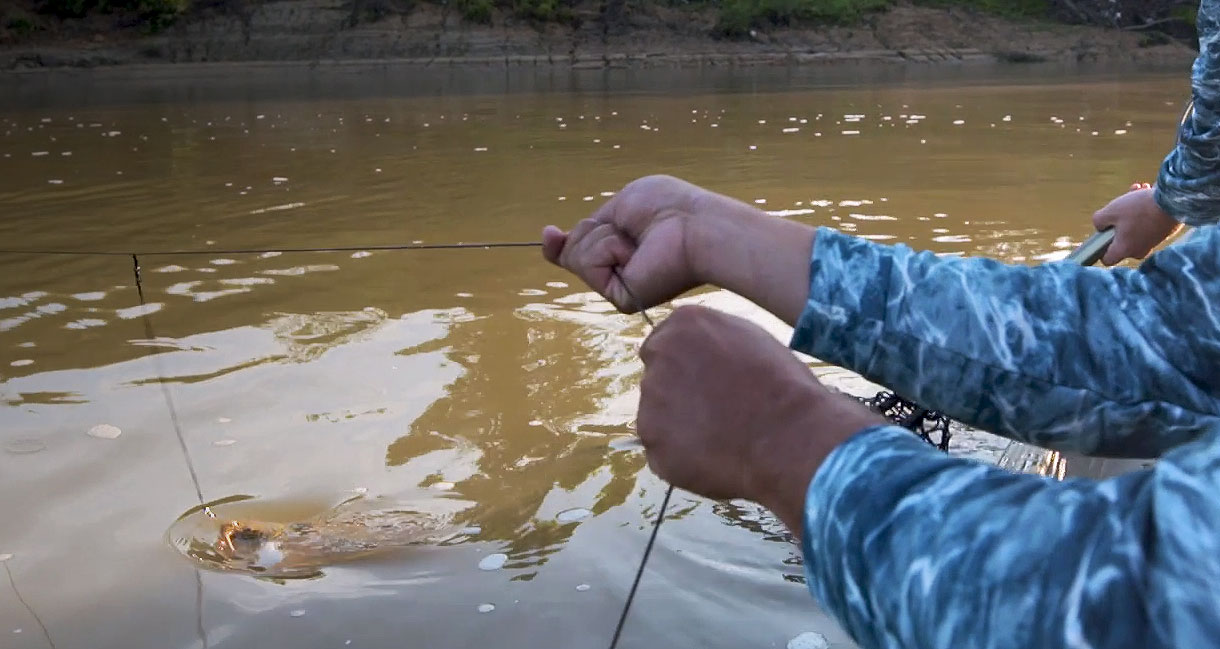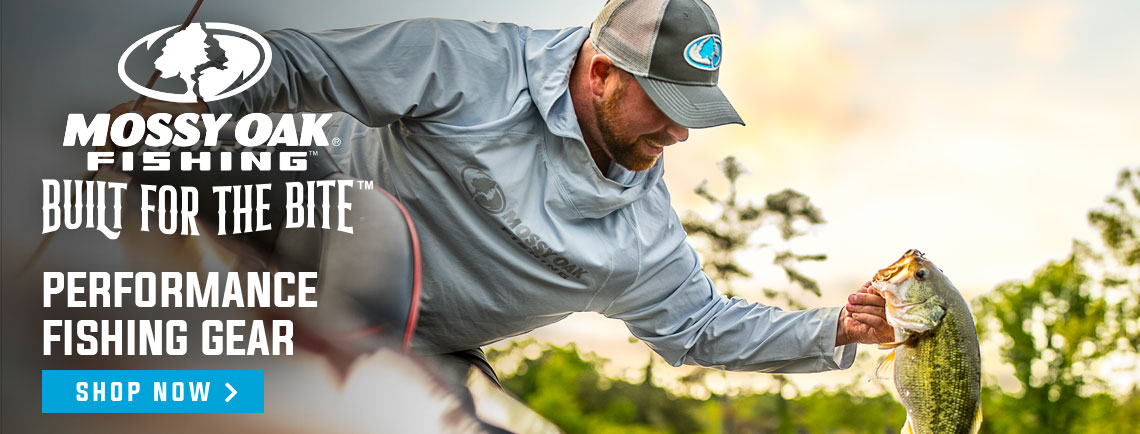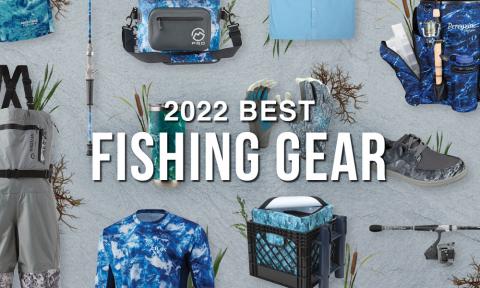Trotline Fishing Tips and Tricks

Where and When to Set out Trotlines
Catching catfish with trotlines is very fun and a great way to provide family and friends with some of the best table fare there is. While many anglers have their go-to ways of catching catfish, there are several timeless tips and tricks out there that may lead to many more fish on your trotline than the next angler.
The first tip to catching catfish on a trotline would be to identify raises in the waterways you’re fishing. The shallower water that these raises may serve flatheads and other catfish subspecies very well as they pursue food at night. These fish tend to lay in deeper water and cover during the day and navigate into shallower, open water at night to feed.
The next tip would be to pay attention to the time of the year you’re fishing. The three times of the year to identify in your area are pre-spawn, spawn, and post-spawn. The spawn is when fish breed. However, different fish may spawn at different times of the year, so don’t confuse the report of someone fishing for spawning bass or crappie with when the catfish may be spawning. When catfish spawn, many of them tend to stay very close to, if not hovering over a bed. This fixes their focus more on breeding and reproducing than feeding, making them harder to catch on a trotline.
Take the state of Kentucky, for example. Catfish in the state of Kentucky tend to spawn in the month of June. Some of the most successful catfishing anglers may fish up to Memorial Day and then back off of setting trot lines in the month of June. Then, around 4th of July, it’s a great time to get your trotlines back in the water.
A final trick that can prove to produce high yields of catfish is to target flathead catfish in the fall when they are heavily feeding to prepare for winter. Months such as September and October, throughout most parts of the U.S., can prove to be very good months to set trotlines. Especially, for flatheads.
What You Need to Build a Trotline
Building a trotline for catfishing can prove to be a relatively simple way to catch a large amount of catfish with minimal effort. The supplies required to build your own trotline can all be acquired at Walmart and are relatively affordable for the yield of catfish they can all provide. Trotline supplies include:
- Main Line - A roll of Hard Nylon Line (#36)
- Drop Lines (The lines going from your main line to your hooks) - A roll of Hard Nylon Line (#18)
- Fishing Swivels - Requires 2 Swivels Per Drop Line
- Catfish Hooks - Requires 1 per Drop Line; Get as big as size 8/0 for bigger catfish like flatheads and blue cats and as small as size 1/0 for smaller breeds like channel or mud catfish
- Trotline Clips - Used to attach angler information for legality purposes or for attaching weights throughout the trotline to maximize the amount of submersion
- Line Winder - Serves to wind up a trotline in an organized manner
How to Build a Trotline:
- How many hooks should you put on a trotline?
- How long does a trotline need to be?
- How do you assemble a trotline?
- How do you weigh down a trotline?
The first question you need to answer is: How long should my trotline be? To answer this question, you will need to do some scouting. If you're going to drop your trotline in a big body of water like a lake or reservoir, you may want to tie off to a couple of trees sticking up in shallow water. In this case, your trotline should be long enough to span the distance between the trees. If you’re dropping the trotline in a river, you need to know where you want to fish. Catfish like creeks and rivers with shallow flats next to deeper water. In many cases, these flats run along the bank for short distances. You may need a short trotline in this case. Other times, you may want to go bank to bank and, in these cases, you will need a longer trotline.
Next, you need to know how many hooks to tie to your trotline. The general rule of thumb is to have a hook every six feet. This will give you good coverage, but hooks will not be so close that they tangle up when a hooked catfish starts thrashing. Check the regulations for the lake and state you fish in. In many cases, there are limits on the number of hooks a trotline can have. Also, most states require trotlines to have a form of identification to indicate who owns the trotline. Make sure your trotline is tagged appropriately.
The easiest way to assemble your trotline is to tie your mainline between two trees. Next, tie your 24-inch drop line to the mainline every six feet. After you tie each dropline, go ahead and tie the swivels and hook to the dropline. Some anglers prefer two swivels per dropline and others use one swivel — the choice is yours. Once you are done, wind it up and you're ready for the water. If you have time and are fishing areas with little traffic, you can do all this at the actual location. Once you're on the water, simply tie off the main line, tie your drop lines and hooks and then bait as you go.
To sink your trotline to the bottom, you will need to tie weights to your trotline. Most anything will work for a weight. Rocks and coffee cans full of cement are often used. Tie enough weights to get to the depth you need. Generally, there is a heavy weight in the middle and several others on either side. Keep in mind the more weight you have, the more weight you're pulling up when checking the trotline.
How to Set a Trotline
Your overall setup will only be as good as where you place the trotline and how well you fasten it to each end’s anchor. The following steps serve as a great baseline to properly setup your trotline:
- Identify solid anchor points to tie the trotline to on each side of the body of water you’re fishing. Solid tree roots, green bushes, or fallen timber are great things to search for first.
- Tie each end of the trotline to the identified anchor points.
- Begin on any side of the trotline and place your drop lines on the main line and bait each hook as you assemble the drop lines. As you progress across the trotline, fasten weights to any points on the main line that will help to properly submerge the main line. Continue fastening the drop lines and weights to the other end of the trotline.
Best Bait to Use on a Trotline
When it comes to catching catfish on a trotline, your trotline will only be as attractive as the bait you put on each hook. It is important to know that different subspecies of catfish prefer different types of food. Knowing which subspecies of catfish you’re targeting will help you determine what type of bait to use on your trotline. Some subspecies of catfish prefer live bait, while others prefer lifeless bait.
Questions that may lead you to choosing the best bait for catfish in your water are:
- What kind of catfish are in the water I’m fishing?
- Of those types of catfish, which ones am I targeting?
Best Live Bait to Use on a Trotline
When targeting flathead or channel catfish, live bait can prove to be the most effective.
Best Cut Bait and Artificial Bait to Use on a Trotline
When targeting blue catfish or channel catfish, freshly cut parts of dead fish work best, followed by any types of dead bait or “stink catfish baits.”
Best Hooks to Use on a Trotline
The best hook to use on a trotline is directly correlated with the size and species of catfish you’re targeting and the size of the bait being used on the trotline. When targeting smaller sizes and species of catfish, such as channel catfish or mud catfish, you may look toward a smaller J-Style hook such as sizes 1/0 or 2/0 hooks. As the catfish size and species you’re targeting get larger, so will the size of your hook. When targeting big catfish such as blue catfish or flathead catfish, you should start getting closer to a size 8/0 hook.































